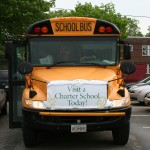Charter schools must succeed or close
by Ben Wolfgang
Washington Times
December 21, 2011
Unlike their traditional counterparts, charter schools aren’t guaranteed an endless existence. And that, supporters say, is a good thing.
Of the 6,700 charters that have opened across the country since 1992, at least 1,036 have closed, according to a new report from the Center for Education Reform, a pro-charters D.C.-based education think tank.

Proponents cite the 15 percent closure rate as evidence that ineffective charter schools don’t last, and only institutions with strong leadership and a focus on student achievement remain viable.
“All too often, supporters and opponents of charter schools claim that bad charter schools don’t close,” said Jeanne Allen, the center’s president. “The truth is, charter schools that don’t measure up are closing. Regrettably, the same can’t be said for traditional public schools.”
To attract students from those traditional schools, charters promise families that their children will receive a better education, demonstrated by higher test scores. If the “bargain” with families is broken, the charter loses credibility and is usually left with no other choice but to close.
“The charter school bargain is just that — the operators have made a promise that they’ll be focused on performance,” said Brian Jones, chairman of D.C.’s Public Charter Schools Board, at a press conference in the District on Wednesday morning, when the report was released.
Mr. Jones said that since the first D.C. charter school opened 12 years ago, 27 have been closed after not living up to their end of the deal.
Three were shut down after the 2010-2011 school year. The previous year, five charters were shuttered.
“We’re not afraid to close schools,” Mr. Jones said. “That’s in the service of every family in the District.”
Nationwide, about 42 percent of charter closures occur for financial reasons, usually low enrollment stemming from the dissatisfaction of students and their families or negative word of mouth, the report states. About 24 percent close because of poor management, and another 18 percent are shut down by their authorizers — boards at the district or state level with the power to approve new charters or close failing ones — for the poor academic performance of their students.
The majority of the closings occur within their first five years, according to the study.
The closures are usually accompanied by new charters coming to life, learning from the mistakes of their peers. Four new charters opened in D.C. this school year, bringing the total to 53. Another 15 charter applications were submitted to the charter board, but were rejected.
Mr. Jones and other charter proponents concede that, despite the best efforts of authorizers and school administrators, some charters that initially appear promising will ultimately close.
“In order to take some risks, sometimes you fail,” he said.














